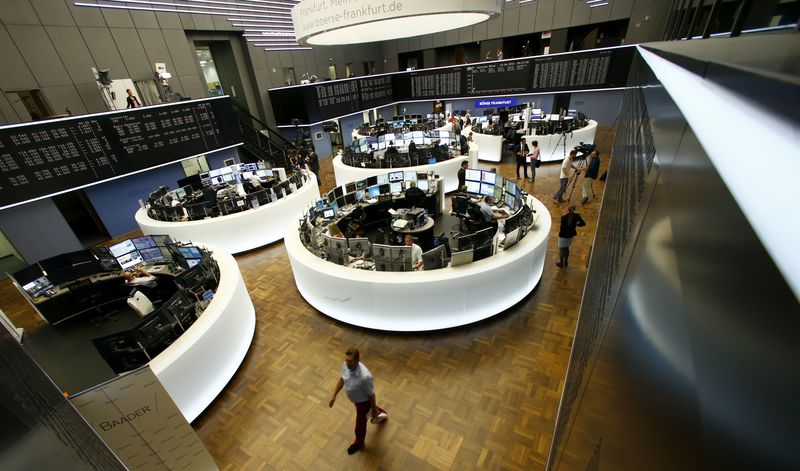Investing.com – As the second half of 2024 approaches, investors should look to get involved with risky assets, according to Morgan Stanley (NYSE:MS), as they offer more upside.
What are risk assets?
A risk asset is an investment holding that has a significant degree of price volatility, due to changes in variables such as interest rates, credit quality and repayment risk. These include predominantly equities, but also commodities and high-yield bonds.
Here’s why Morgan Stanley’s outlook looks favorable for these for the rest of 2024.
2024 macro environment for investing
The main indices on Wall Street are on track to end May on a strong note, as better-than-expected quarterly earnings reports lifted sentiment, while cooler inflation data suggested rate cuts could come earlier than investors had anticipated.
The S&P 500 has advanced 5.3% this month, the NASDAQ Composite has rallied about 8%, and the Dow Jones Industrial Average has gained 3.3%, after topping 40,000 for the first time ever this month.
Record highs have also been seen in Europe as well as parts of Asia as the positive sentiment has filtered across the globe.
Morgan Stanley sees grounds for this optimism to continue in the second half of the year.
“While the first half of this year saw markets whipsaw as investors priced in and out soft landing, hard landing, and no landing scenarios with every data surprise, the second half should see the paths of disinflation, growth, and policy become clearer, setting up a constructive outlook for nearly all markets,” analysts at the U.S. investment bank said, in a note dated May 19.
The overall narrative of macro normalization and policy easing is still intact, just delayed as U.S. growth has been more robust than we had expected and inflation across most countries has been stubbornly stickier.
This means central banks can still ease toward neutral – we see the Fed starting to cut in September, the ECB and the BoE starting in June, with all expected to cut by at least 75 basis points by the end of the year.
Against a backdrop of good global growth and decent disinflation, fundamentals should be favorable.
“Our equity strategists are forecasting 2025 US earnings growth of ~13%, while our colleagues in Europe and Japan see higher earnings revision breadth sustaining those regions' bull markets,” Morgan Stanley added.
“Consensus EBITDA numbers would suggest that U.S. IG [investment grade] corporate [bonds] can de-lever into 4Q24,” the bank added, while “low-risk EM HY [emerging market high-yield] fundamentals should hold up.”
The sun won’t shine forever
That said, Morgan Stanley warned that the outlook is clouded with uncertainties in the early months of 2025, which are difficult to quantify.
The next 12 months are filled with events that are: hard to model outcomes for (e.g., U.S. elections); hard to model the consequences of the outcomes (e.g., resolution to ongoing conflicts or the prospects for fiscal policy changes following the U.S. elections); or hard to model because long-standing relationships between economic and market variables have vanished in the post-pandemic world (e.g., household formation, locked-in and priced-out effects in housing).
“This explains why our strategists' latest forecasts have an unusually wide gap between their bull and bear cases for bond and equity markets. While a bullish scenario where we retread the mid-1990s or 2019 is definitely possible – and arguably, the path to that outcome is a lot less narrower than to a bearish outcome – we have higher conviction that the positive returns forecasts apply to 2H24 rather than beyond.”
What should U.S. investors do?
The bank is bullish on equities, but added that valuations are not cheap in many markets, which suggests picking “markets which still offer premium, optionality, and carry” … “rather than letting fear of rain dampen fun in the sun.”
The MSCI Europe index has roughly 25% revenue exposure to the U.S. and approximately 30% exposure to emerging markets, Morgan Stanley added, which mean that the market can benefit from hotter growth in either region, but at much cheaper valuations than the S&P 500, and much lower volatility than owning MSCI EM outright.
In terms of corporate credit, if global growth turns out to be more robust, credit spreads – already close to prior cycles' tights – can go lower regardless of higher inflation; but should growth grind to a halt, credit total returns can benefit from duration.
Morgan Stanley also suggested a form of insurance policy, in the form of coupon income, commonly known as carry.
“For a USD-based investor, FX-hedged dividend yields of Europe and Japan at 4%+ are above the historical average, and attractive. Rain or shine, carry can be your friend,” the bank added.
How to stay on top of Dow Jones index movements
There’s likely to be plenty to keep an eye on as the Dow Jones Index (DJIA) movements continue to play out. Thankfully, with the interactive charts and historical currency info available right here on investing.com, investors can keep up with live data.
